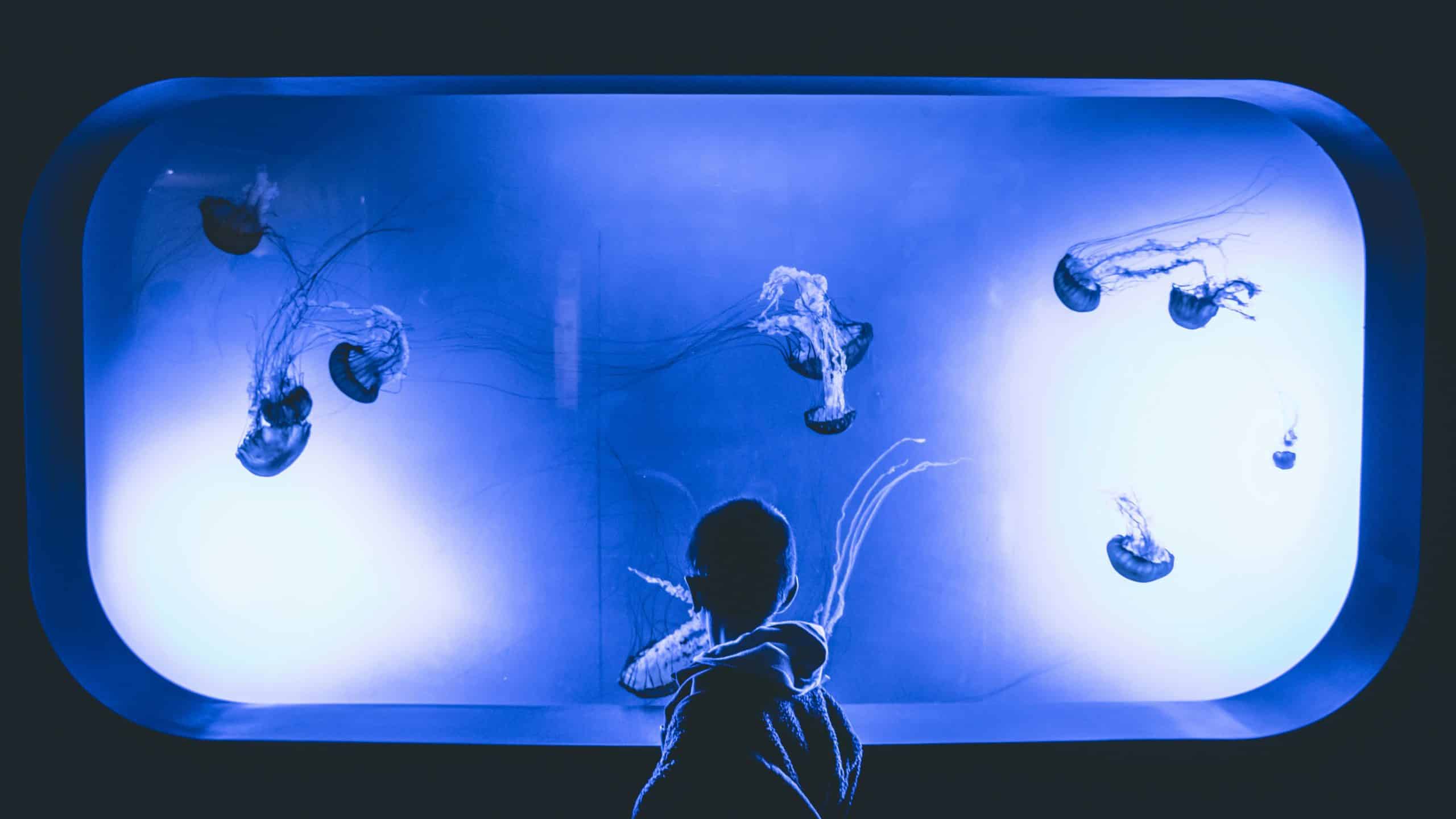One of the many challenges that tropical fish owners face is keeping the water temperature in their aquarium within a suitable range during the cold winter months. Many species of tropical fish are used to warm waters, and a sudden drop in temperature can have dire consequences for their health. A cold aquarium can lead to many problems, such as slowed metabolism and immune responses, which can make your fish more susceptible to disease. With the right knowledge and equipment, however, you can ensure that your fish remain healthy and comfortable all winter long.
Understanding the Importance of Water Temperature in Fish Tanks
Before we delve into the solutions, it’s crucial to understand why maintaining optimal water temperature is vital for tropical fish. The survival of these species is dependent on a steady, warm environment, as it directly impacts their metabolism, growth, and wellbeing.
A lire également : Can Clicker Training Be Used with Guinea Pigs, and What Are the Techniques?
Tropical fish are ectothermic creatures, meaning they rely on external sources for body heat. Therefore, unlike humans who maintain a constant body temperature regardless of the environment, fish’s body temperatures fluctuate according to their surroundings. Abrupt changes in water temperature can stress fish, leading to compromised health and even mortality.
The ideal water temperature for tropical fish usually lies between 74 and 80 degrees Fahrenheit. Any deviation from this range, especially when it comes to frigid winter temperatures, can spell disaster for these warm-water-loving species.
Dans le meme genre : What’s the Best Approach to Wean Puppies Onto Solid Food?
Selecting the Right Heater for Your Fish Tank
Choosing the appropriate heater for your aquarium is paramount in maintaining the optimal water temperature. There are numerous heaters available on the market, each with its advantages and specifications. Selecting one depends on the size of your tank, the heat output, and the specific requirements of your fish species.
Make sure to pick a heater powerful enough to heat your entire tank evenly. The general rule is to use 3 to 5 watts per gallon of water. For example, a 20-gallon tank would require a heater of 60 to 100 watts. Also, consider the heater’s position in the tank. Ideally, the heater should be near the water flow, such as the outlet (or inlet) from the filter, to distribute heat evenly.
It’s recommended to have a backup heater on hand, especially during winter. If the primary heater fails, the auxiliary heater will step in, preventing a sudden temperature drop.
Monitoring and Adjusting Water Temperature Regularly
Even with a reliable heater, you need to keep a close watch on the water temperature in your aquarium. A simple aquarium thermometer can be a useful tool for this purpose.
As a responsible fish owner, it is essential to monitor the temperature daily, especially during winter. Sudden cold snaps or heater malfunction can lead to a rapid drop in temperature, potentially harming your fish.
By regularly checking the temperature, you can adjust it promptly if it falls outside the optimal range. If the water gets too cold, adjust your heater accordingly to warm it. In case of heater malfunction, your backup heater can be a literal lifesaver for your fish.
Providing Adequate Insulation for Your Aquarium
Another effective way to keep the temperature in your tank steady during winter is by providing proper insulation. You might not realize it, but a significant amount of heat can be lost through the glass walls of an aquarium.
Insulating your aquarium can help to retain heat and keep the water temperature more consistent. This can be done by wrapping the back and sides of the tank with a thick insulating material like polystyrene or foam board.
It’s also worthwhile to consider placing your aquarium in a warm area of your home, away from drafts or open windows. A well-insulated room can provide an additional layer of protection against the cold winter temperatures.
Incorporating Heat Sources in Your Aquarium’s Environment
Finally, you can introduce additional heat sources to your aquarium’s environment to help maintain an ideal temperature. These sources include incandescent light bulbs and heating mats that are specially designed for aquarium use.
Incandescent bulbs generate more heat than fluorescent or LED bulbs, and when placed above your tank, can help to increase the water temperature. However, be careful not to increase the temperature too significantly as this may also stress your fish.
Heating mats, on the other hand, can be placed under the aquarium to provide a gentle, continuous source of heat. They are particularly useful for large or long tanks where a single heater may not distribute heat evenly across the entire tank.
Remember, a comfortable and warm tank is key to keeping your tropical fish healthy and happy during the cold winter months. By understanding the importance of an optimal water temperature, selecting the right heater, monitoring and adjusting the temperature regularly, providing adequate insulation, and incorporating additional heat sources, you can ensure your fish thrive in the perfect tropical environment, even when it’s chilly outside.
Recognizing Signs of Temperature Distress in Your Fish
As a tropical fish owner, it is important to recognize the signs of temperature distress in your fish. This is because abnormal behaviors in your fish can be an early warning sign of an inconsistent or unsuitable water temperature in your aquarium.
Fish are sensitive to changes in their environment, and the temperature of their water is no exception. When the water temperature is too low, fish may become lethargic, eat less, and show signs of stress. They might even manifest physical symptoms like clamped fins, erratic swimming, and a lack of color vibrancy.
In the worst-case scenario, sudden and drastic temperature changes can lead to shock and death, particularly in tropical fish who are accustomed to a stable warm environment. Consequently, noticing these signs early can be key to correcting the situation and avoiding a potentially catastrophic outcome.
Ensure you are familiar with the normal behavior and appearance of your fish species. This way, any abnormalities can be quickly identified and addressed. In addition, it’s good practice to consult a professional or take your fish to a vet if you notice persistent abnormal behavior or if your fish seems unwell, even after adjusting the water temperature.
Ensuring Regular Maintenance and Care
The maintenance of your aquarium plays a pivotal role in achieving a consistent water temperature. This includes regular cleaning of your tank, proper feeding of your fish, and ensuring that your heater and other equipment are in good working condition.
When cleaning your tank, avoid using cold water as this will lower the temperature drastically and might unsettle your fish. Instead, use warm water that is within the ideal temperature range for your tropical fish.
When it comes to feeding, bear in mind that fish’s metabolism slows down in cold water. As such, they might eat less during winter. Overfeeding your fish can lead to uneaten food, which can decompose and affect the water quality, thereby indirectly impacting the water temperature.
Moreover, regular checks and maintenance of your heater are essential. This is because a faulty heater can fail to maintain the desired temperature, known as a temperature swing, which can be fatal for your tropical fish. Make sure to inspect your heater frequently and replace it if it is not functioning properly.
Conclusion
Maintaining the optimal water temperature for your tropical fish during winter can seem like a daunting task, especially for new fish owners. However, equipped with the right knowledge and tools, you can create an ideal environment for your fish that is both warm and stable.
Remember, understanding the importance of a consistent water temperature, choosing the right aquarium heater, regular monitoring, providing adequate insulation, incorporating additional heat sources, recognizing signs of temperature distress, and ensuring regular maintenance are all steps towards creating a thriving habitat for your tropical fish.
In the end, your efforts will be rewarded with healthy, happy fish that add beauty and serenity to your home, regardless of the weather outside. So, embrace the challenge and enjoy the rewarding hobby of tropical fish keeping.






